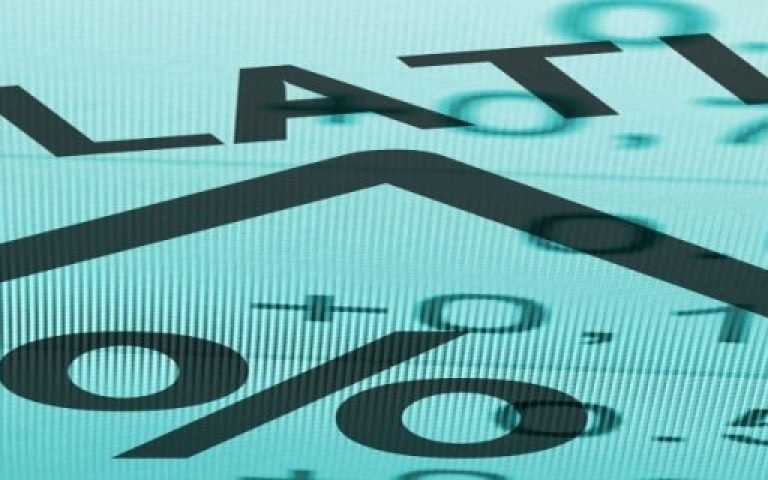The inflation rate slowed for the third consecutive time as the Ghanaian economy recovers gradually from the strong pickup in economic activities in the last month of last year, as well as the surge in election-linked public expenditures. The slowdown in the March inflation numbers is also attributable to improving harvest as weather conditions begin to improve following the onset of the rains.
The latest consumer prices data for March showed that the inflation rate recorded its third successive dip to close the first quarter of the year at its lowest in five months at 22.4%, having gradually declined from a high of 23.8% at the close of last year. The month-on-month inflation reading similarly followed suit as it also registered its third consecutive dip to 0.2%, its lowest since August 2024, having slowed down from 1.3% in the previous month. A statistical service data revealed that deflation numbers recorded by some locally produced items with significant weights, such as smoked herrings, smoked river fish, fresh tomatoes, yams, among others, helped to sustain the drop in the national inflation reading.
The annual food inflation fell by a larger margin in March compared to the margin of decrease recorded in the previous month, following a deflation recorded in the monthly reading in the food basket. The annual food inflation print came in at 26.5%, a slowdown from 28.1% in February, whilst the month-on-month food inflation print dipped from 1.8% in February to -0.2% in March. Ten out of the observed fifteen sub-group items saw varying degrees of disinflation between February and March, which helped to lower the food basket’s inflation.
Inflation on non-food items saw a slight decline between February and March, with the annual inflation reading undergoing a decline from 18.8% to 18.7% whilst that of the monthly reading also saw a decline from 0.9% to 0.7% respectively. Despite the sticky movement, nine out of the observed twelve sub-group items led by Education, which declined from 0.4% to -0.1%, recorded varying degrees of disinflation.
Across the regions, the inflation rate hovered between 18.9% in the Volta region and 36.2% in the Upper West region. Inflation on local items saw its third dip this year to 24.0% in March, from 25.1% in February, whilst that on imported items maintained its upward trajectory from 18.5% last month to 18.7% in March.
The March sitting of the Monetary Policy Committee saw the newly constituted panel embark on a tougher stance against a sticky downward inflationary path as the committee delivered a 100 basis points upward adjustment in the policy rate while also announcing a raft of complementary measures aimed at re-anchoring the disinflation process.



![Currency News [May 26, 2025]](https://theparkstone.sgcancerghana.com/wp-content/uploads/2019/11/eCur1e-scaled-768x480.jpg)
![Treasury Rates [May 26, 2025]](https://theparkstone.sgcancerghana.com/wp-content/uploads/2019/11/eTreasury-bills-notes-and-bonds-scaled-768x480.jpg)

![Treasury Rates [May 5, 2025]](https://theparkstone.sgcancerghana.com/wp-content/uploads/2019/11/edrecon_00-12-scaled-768x480.jpg)
![Treasury Rates [April 28, 2025]](https://theparkstone.sgcancerghana.com/wp-content/uploads/2022/02/treasury-bond-1-768x480.jpg)
![Market Update Report [March 2025]](https://theparkstone.sgcancerghana.com/wp-content/themes/dfd-native/assets/images/no_image_resized_675-450.jpg)
![Currency News [April 2, 2025]](https://theparkstone.sgcancerghana.com/wp-content/uploads/2019/11/eCur1-scaled-768x480.jpg)

![Currency News [January 27, 2025]](https://theparkstone.sgcancerghana.com/wp-content/uploads/2019/11/eCur-scaled-768x480.jpg)
![Treasury Rates [September 30, 2024]](https://theparkstone.sgcancerghana.com/wp-content/uploads/2019/11/eTBills-scaled-768x480.jpg)
![Treasury Rates [August 19, 2024]](https://theparkstone.sgcancerghana.com/wp-content/uploads/2019/11/epicsart_12-29-02-20-28-scaled-768x480.jpeg)
![Currency News [January 29, 2024]](https://theparkstone.sgcancerghana.com/wp-content/uploads/2022/02/download-768x480.jpg)
![Currency News [March 27, 2023]](https://theparkstone.sgcancerghana.com/wp-content/uploads/2022/02/j5fy1mDI_400x400-768x480.jpg)
![Currency News [October 17, 2022]](https://theparkstone.sgcancerghana.com/wp-content/uploads/2019/10/Cur1ee-768x480.jpg)
![Currency News [September 19, 2022]](https://theparkstone.sgcancerghana.com/wp-content/uploads/2022/02/download-1-768x480.jpg)

![Currency News [May 23, 2022]](https://theparkstone.sgcancerghana.com/wp-content/uploads/2019/11/eUSDGHS-scaled-768x480.jpg)